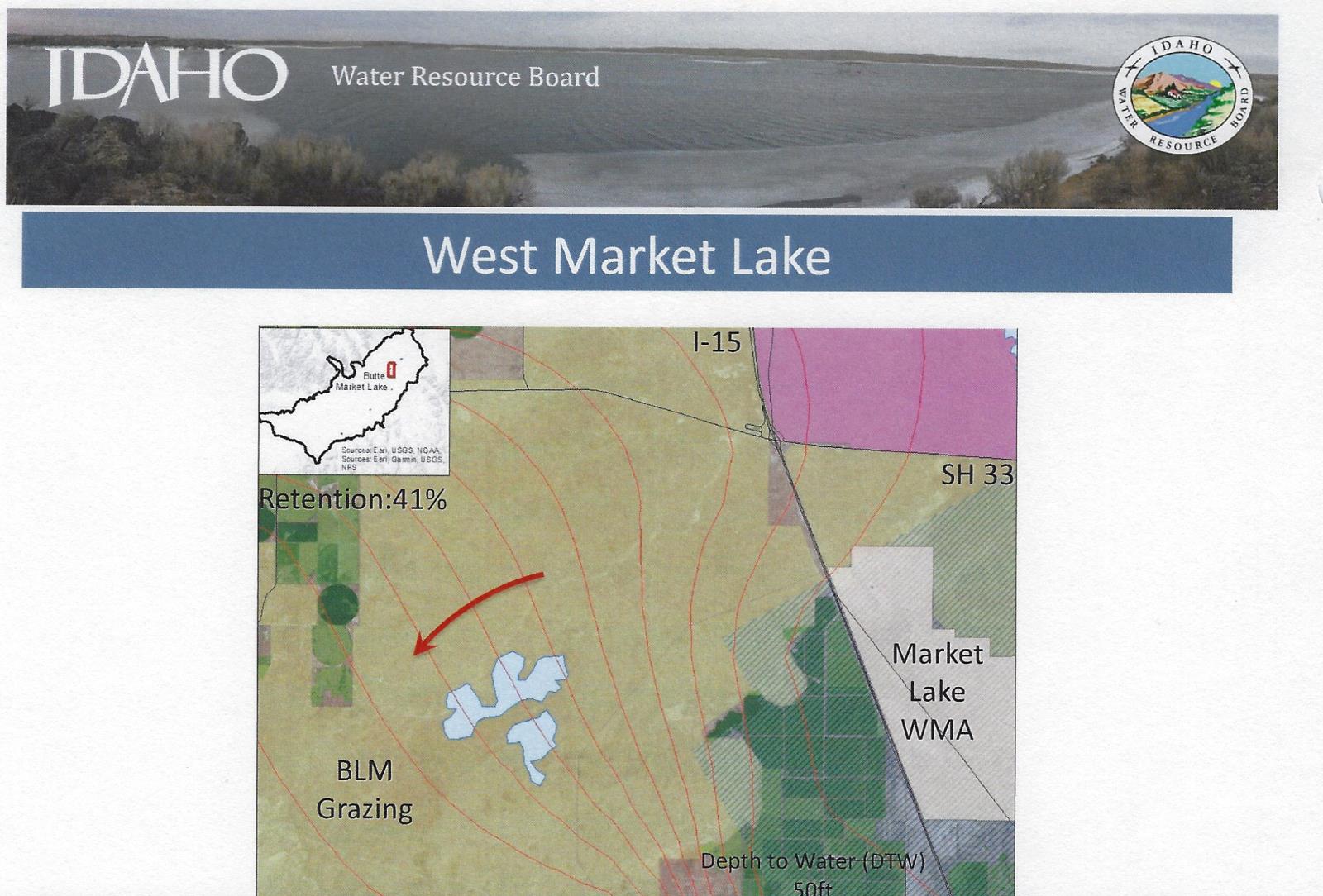Idaho Water Resource Board reviews options for large recharge sites

BOISE – The Idaho Water Resource Board heard a presentation from staff about potential locations for a large recharge basin in the upper portion of the Eastern Snake Plain Aquifer region in its regular meeting last week.
Staff presented the pros and cons of potential sites north of Lake Walcott, Aberdeen-Springfield area, New Sweden near Idaho Falls, one along the Egin-Hammer Road and a promising site near West Market Lake in Jefferson County.
The IWRB is looking to increase recharge capacity in the upper valley with a site that could take about 200 cubic feet per second of water flow.
Under plans to restore the ESPA to sustainable levels, the board is responsible for recharging an annual average of about 250,000 acre feet of water into the ESPA on an ongoing basis.
The board has a number of large recharge sites in the Magic Valley area, but it is looking to develop a productive site in the upper valley to complement a large recharge site at the Egin Bench near St. Anthony Sand Dunes.
Staff officials said the West Market Lake site, located directly west of Interstate 15 and the Market Lake Wildlife Management Area, is an example of a promising site in terms of the depth to ground water, retention time (longer is better) in the ESPA, geologic features conducive for recharge, and no major land use issues such as any threatened or endangered species or wilderness study areas.
Despite these positive attributes, the location would still require pumping water uphill 33 vertical feet over eight miles, staff said. The site would have a 41 percent retention rate over five years.
“There are so many pieces to this puzzle. We have to look closely at each site,” said board member Vince Alberdi of Kimberly.
Board members referred the matter to a subcommittee to further evaluate the proposed sites before any decisions are made. While the sites were initially identified for their size and location, they all had various challenges with water conveyance accessibility, land use constraints, water-retention, and more.
In other action, the board approved a water transactions project in the Teton River Basin to deliver recharge water into gravel pits to support both the local aquifer and increase flows in tributary creeks of the Teton River in the summer for fish.
The board approved $60,600 for the two-year pilot recharge project through the Columbia Basin Water Transactions Program to fund water delivery agreements with Teton River farmers and irrigators. The project is supported by local irrigators and the Friends of the Teton River, officials said.
Sarah Lien, water resources director for the Friends of the Teton River, said local water users used to sub-irrigate the valley to bring up the water table as a benefit to all water users, which also benefitted fish and wildlife.
But with all the growth occurring in the Teton Valley, there is a need to do managed recharge to increase the ground water aquifer and cool off the river for the Yellowstone cutthroat trout, a native species of concern, she said.
“Our goal is to reset the water supply back to the 1970s, when there was more flood irrigation,” Lien said.
Still can't find what you are looking for? Find by topic:
- Achievement Award (YF&R)
- Actions Alerts
- Advocacy
- Ag Ambassadors
- American Farm Bureau
- American Farm Bureau Policy Book
- Archive Photos
- Articles
- Board of Directors
- Calendar - State/District
- Calendar - County
- Capitol Reflections
- Collegiate Chapters
- Committee Application Form
- Commodities
- Convention Annual
- County Presidents & Board Information
- County Resource Page
- Delegate Form
- Discount Programs
- Discussion Meet
- Discussion Meet - High School
- Education Programs
- Events
- Excellence Award (YF&R)
- Expense Voucher
- Flickr
- Gem State Producer
- High School Discussion Meet
- High School Speech Contest
- Hope in Idaho Ag
- House of Delegates Credentials Form
- IFBF Board of Directors
- IFBF Policy Book
- IFBF Staff
- Insurance
- Legislative Action Program
- Legislative Issues
- Library
- MAC Trailer
- Magazines
- Map My Benefits
- Member Benefits
- Member Discount
- Membership Application
- Mission Statement
- Moving Agriculture to the Classroom
- Newsletter Sign up
- News Releases
- News Room
- Open Range Law
